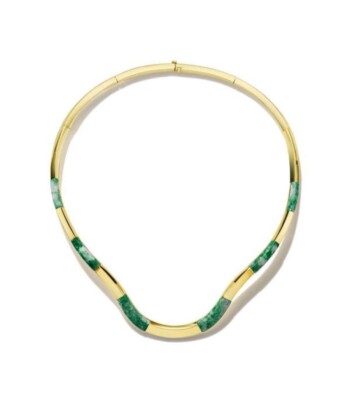It took only moments after leaving Cairo International Airport to be immersed in the full frenzy of the largest city in the Middle East. Cars did not follow the lines on the road, people darted in and out of traffic without hesitation, and mothers carried goods on their heads, holding tightly onto children as the families wove between passing cars. It was early evening, and the city was teeming with people, twentysomethings lining up on the Qasr al-Nil Bridge, watching as boats traveled up and down the Nile, neon lights flashing and music blaring as the people inside them danced. All I could think was, Why did it take me so long to get here?
Egypt is one of those places that often appears on people’s “someday list” but takes years, if ever, to get checked off. Just a four-hour flight from most European capitals, it should be the starting point for every serious traveler. With 6,000 years of accessible, touchable, layered history and knowledge to explore, it is also affordable, has incredible food, and offers rich, modern culture.
Why Now
After the Arab Spring in late 2010, tourism in Egypt, one of the country’s leading economic generators, fell off dramatically, and the decline was felt everywhere. But now, in light of improved security and a stable government, travelers are confidently returning, and 2019 is tipped to exceed prerevolution numbers, says Jenny Gray of Peregrine Adventures, a luxury travel company that has operated in Egypt for 25 years.
“Egypt has spent millions of dollars on security reforms in airports and key tourist attractions throughout the country,” she says. “It’s a location that everyone should see at least once in their lifetime, and there is so much to see on multiple trips. Now is the time to get there—while you can still experience ancient wonders with no more than a handful of other travelers.”
The Last Wonder of the Ancient World
From Lower to Upper Egypt, there is an abundance of attractions. My trip began with Cairo itself, an incredible city best explored with a local guide who knows the best places to eat among the thousands of small restaurants. Guides can translate Arabic and understand the rules of dress, culture, and religion, as well as the art of bargaining in Egypt, which can be put to good use at the Khan el-Khalili souk, a vast district full of antiques, handcrafted goods, and souvenirs where all the prices are up for debate. While at the souk, be sure to stop into El-Fishawi for a Turkish coffee and a pull or two on a hookah.
Just outside the city is the last of the Seven Wonders of the Ancient World: the Great Pyramid of Giza, resting place of Pharaoh Khufu. Again, with so few crowds—only a few hundred people on the morning I visited—we walked leisurely around the collection of pyramids, climbing deep inside the Grand Gallery, into the King’s Chamber, and had ample time to admire the majesty of the Great Sphinx, originally built to guard the pyramids themselves. Nearby, the historic Marriott Mena House, which has welcomed kings, queens, and presidents, is perfectly situated, with incredibly close views of the pyramids.
The Opening of the Grand Egyptian Museum
Bridging the experience of the pyramids and the treasures of ancient Egypt, the new $1 billion Grand Egyptian Museum will soon open on a site neighboring the pyramids. This massive 5,000,000-square-foot, air-conditioned museum will replace the current Egyptian Museum, built in 1902 in downtown Cairo. Scheduled to open in early 2019, the Grand Egyptian Museum will be the largest museum of Egyptology in the world. The first exhibit to be unveiled will be the full Tutankhamun collection, with 3,200 pieces displayed for the first time. The complex will also have several restaurants, a children’s museum, a conservation center, parks, and gardens.
“The opening of the Grand Egyptian Museum this year is pitched to lure back even more travelers from all around the globe,” Gray says. “The new museum is designed to include the latest technology, and, once completed, it will be a world-leading scientific, historical, and archaeological study center.”
Where to Stay
This year, the much-anticipated St. Regis Cairo will open with 36 stories; 366 rooms, suites, and apartments; and seven restaurants and bars. But if you feel that part of traveling is experiencing local hospitality, that can be found in the older hotels of Egypt built during the first period of British rule, such as the Winter Palace in Luxor and the Old Cataract Hotel in Aswan.
“Egyptian luxury doesn’t mean shiny and new; it’s actually much better,” Gray says. “The country has long fascinated the worldly traveler, and if there were a golden age of travel, it could be traced to the discovery of Tutankhamun’s tomb in 1922. Travelers today can step back in time and stay in a plush riverside winter retreat of the Egyptian royal family, enjoy full-board hospitality sailing the Nile on an elegant dahabeah (the Nile houseboat of yore), take high tea at the very spot where Agatha Christie penned Death on the Nile—the Old Cataract Hotel—and retrace the footsteps of the great explorers with expert local Egyptologists.”
Egypt on Film and Stage
According to Variety, Death on the Nile is set to become the second Christie novel to be turned into a film by Kenneth Branagh, this time in 2020. She wrote the novel while staying at the aforementioned Old Cataract, a 19th-century Victorian palace that sits on a ledge of pink granite along the Nile. Overlooking the Nubian Desert with views of Elephantine Island, it is, in itself, an experience of time and travel.
In another sign of Egyptian resurgence, the opera Aida will return to Luxor in 2019. “Before the revolution, this was a frequent and popular event, and its return is a reflection of the current stability,” Gray says. Set in ancient Egypt, Aida is a timeless story of love and betrayal against the backdrop of war. “In this case,” she says, “it will be set against the dramatic backdrop of ancient Egyptian ruins.”
Walk with Queens and Pharaohs
From the outside, the Valley of the Kings is a dry and dusty landscape surrounded by tall limestone mountains. Who could believe that beneath it all, 63 (known) tombs were dug deep into the earth, and here kings of the ancient world gathered their most treasured possessions to make their final transition to the afterlife? Having learned the lessons of looted pyramids in Giza, the ancients ensured the whereabouts of the Valley of the Kings was hidden from the public. Even those who were taken there to dig the graves didn’t know their location, miles from Luxor on the West Bank of the Nile.
And yet, despite the thousands of years that have passed, as I stepped into the long entry hall of Ramses IV’s tomb, it felt as if he had been laid to rest yesterday. Its walls of carved hieroglyphs and barrel-vaulted ceilings are painted in vibrant colors, telling stories from the Book of the Dead and the Book of Caverns, among others. Nearby is a much smaller and less ornate tomb but, for modern-day travelers to Egypt, a highlight of the trip—the tomb of Tutankhamun. Its discovery in the ’20s spurred a generation of archaeologists’, Egyptologists’, and treasure hunters’ fascination with the boy king that continues to this day. His mummy, small and fragile, lies in a glass box in his tomb, which, according to our guide, had to be dug and prepared in 70 days—the same amount of time it took to mummify his body.
The Original Adventure Travel Destination
Egypt is everything one hopes travel will be—challenging, exhilarating, and full of fascinating sights, smells, songs, and people willing to share their culture and stories, welcoming and eager to have visitors back in the country. Thanks in large part to a great local guide and a well-planned itinerary, by the time I took that last death-defying drive through Cairo back to the airport, I was already planning my return. Only one visit among the queens and pharaohs of Egypt just won’t do.





































